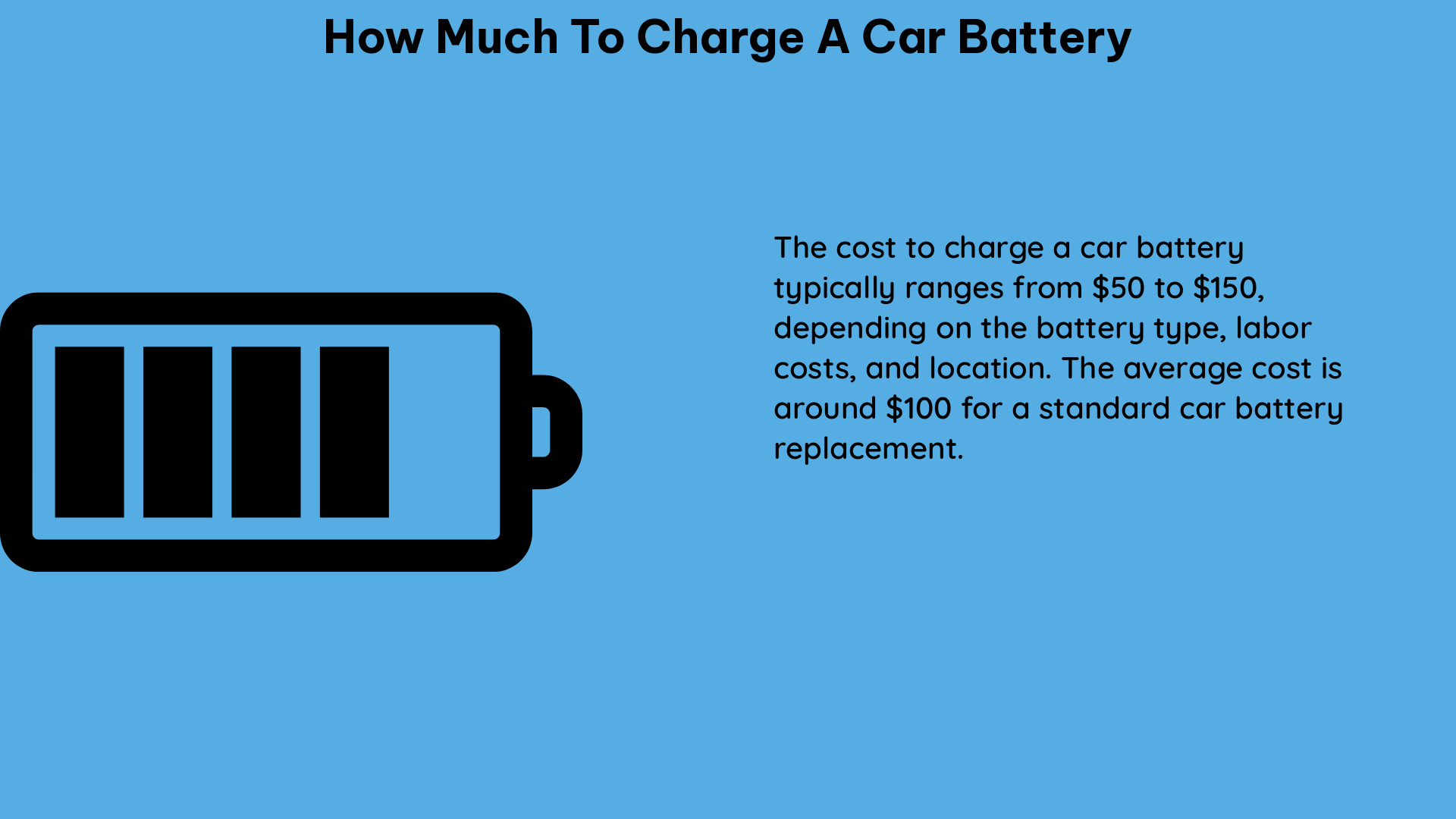Charging a car battery correctly is crucial to maintaining its performance and longevity. This comprehensive guide will provide you with the technical specifications and a step-by-step DIY approach to ensure your car battery is charged efficiently and safely.
Understanding Car Battery Capacity and Charging Rates
The first step in determining how much to charge a car battery is to understand its capacity, which is typically measured in amp-hours (Ah). A standard large car starting battery has a capacity of around 100 Ah. To calculate the battery’s energy capacity, we multiply the Ah rating by the battery voltage (usually 12V for car batteries), which gives us 1200 watt-hours (Wh).
When charging a car battery, it’s recommended to use a charging rate of C/4 to C/5, which means 1/4 to 1/5 of the battery’s capacity in Ah. For a 100 Ah battery, this equates to a charging current of 20-25 Amps. Charging at a higher rate can damage the battery and reduce its lifespan.
| Battery Capacity | Recommended Charging Rate | Charging Current |
|---|---|---|
| 100 Ah | C/4 to C/5 | 20-25 Amps |
Calculating Charging Time

The time it takes to charge a car battery depends on the battery’s capacity and the charging current. For example, to charge a 100 Ah battery to 80% in 2 hours, we would need a charging current of 40 Amps (100 Ah x 0.8 / 2 hours). However, it’s important to note that charging at a high rate can cause the battery to heat up, which can also reduce its lifespan.
The formula to calculate the charging time is:
Charging Time (hours) = Battery Capacity (Ah) x State of Charge (%) / Charging Current (Amps)
For example, to charge a 100 Ah battery from 20% to 80% state of charge:
Charging Time = 100 Ah x (0.8 - 0.2) / 25 Amps = 2.4 hours
Avoiding Overcharging and Maintaining Battery Health
When charging a car battery, it’s essential to ensure that it’s not overcharged, as this can cause the electrolyte to boil off and damage the battery. A fully saturated charge of 14-16 hours is recommended, and the battery should be kept charged to avoid storage below 2.07V/cell or at a specific gravity level below 1.190.
To maintain the battery’s health, it’s also important to consider the charging temperature. The optimal charging temperature should be between 10°C and 25°C.
DIY Car Battery Charging Steps
To charge a car battery at home, follow these steps:
- Check the Battery’s State of Charge: Determine the battery’s current state of charge. If it’s completely dead, you may need to jump-start the car before charging.
- Connect the Charger: Connect the charger to the battery, ensuring that the charger’s voltage matches the battery’s voltage (typically 12V).
- Set the Charging Current: Set the charging current to C/4 to C/5, depending on the battery’s capacity. For a 100 Ah battery, this would be 20-25 Amps.
- Monitor the Charging Process: Closely monitor the charging process to ensure that the battery is not overcharged.
- Disconnect the Charger: Once the battery is fully charged, disconnect the charger.
By following these steps, you can safely and efficiently charge your car battery at home.
References
- Calculating EV Battery State of Health and Real-World Range
- How Many kWh to Recharge a Car Battery from AC Outlet?
- Acid Stratification and Surface Charge
- What Amount of Current Should I Use to Charge a 12V Car Battery?
- Factors Affecting the Charging of Lead-Acid Batteries

The lambdageeks.com Core SME Team is a group of experienced subject matter experts from diverse scientific and technical fields including Physics, Chemistry, Technology,Electronics & Electrical Engineering, Automotive, Mechanical Engineering. Our team collaborates to create high-quality, well-researched articles on a wide range of science and technology topics for the lambdageeks.com website.
All Our Senior SME are having more than 7 Years of experience in the respective fields . They are either Working Industry Professionals or assocaited With different Universities. Refer Our Authors Page to get to know About our Core SMEs.